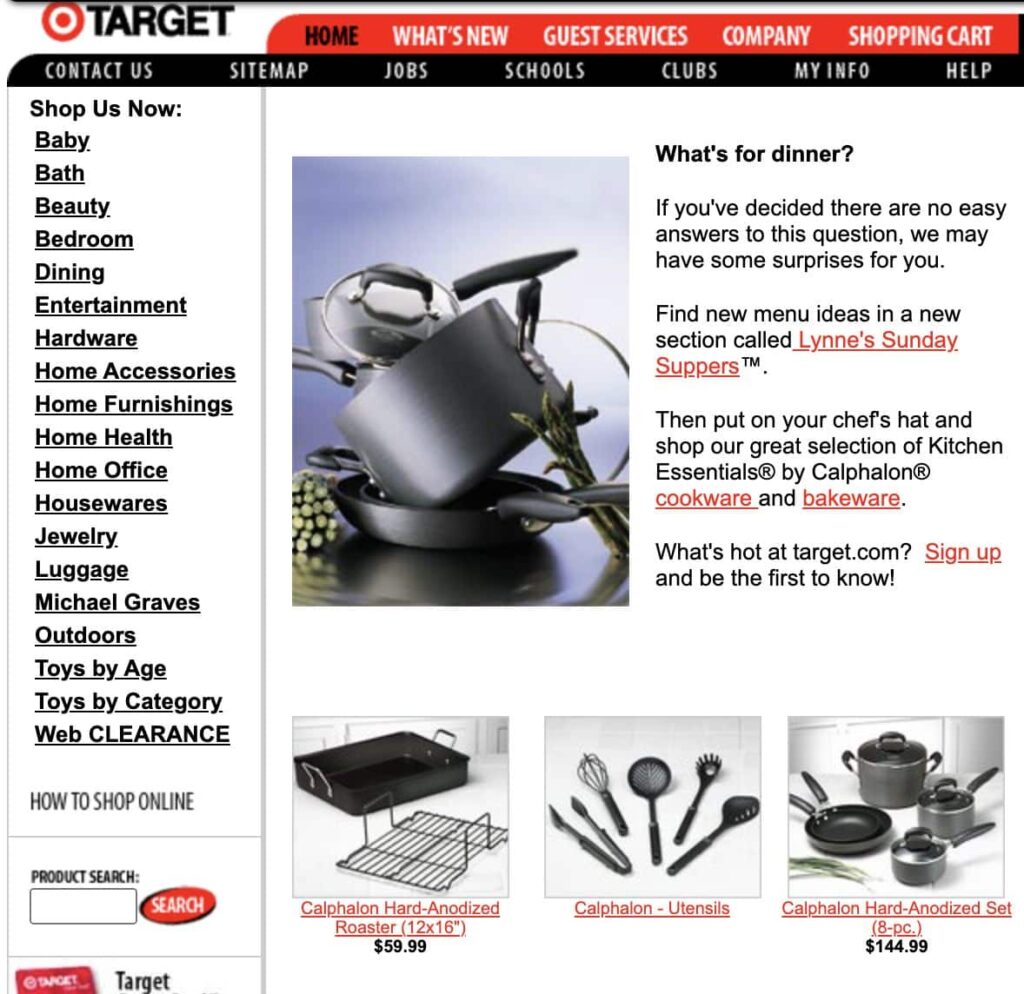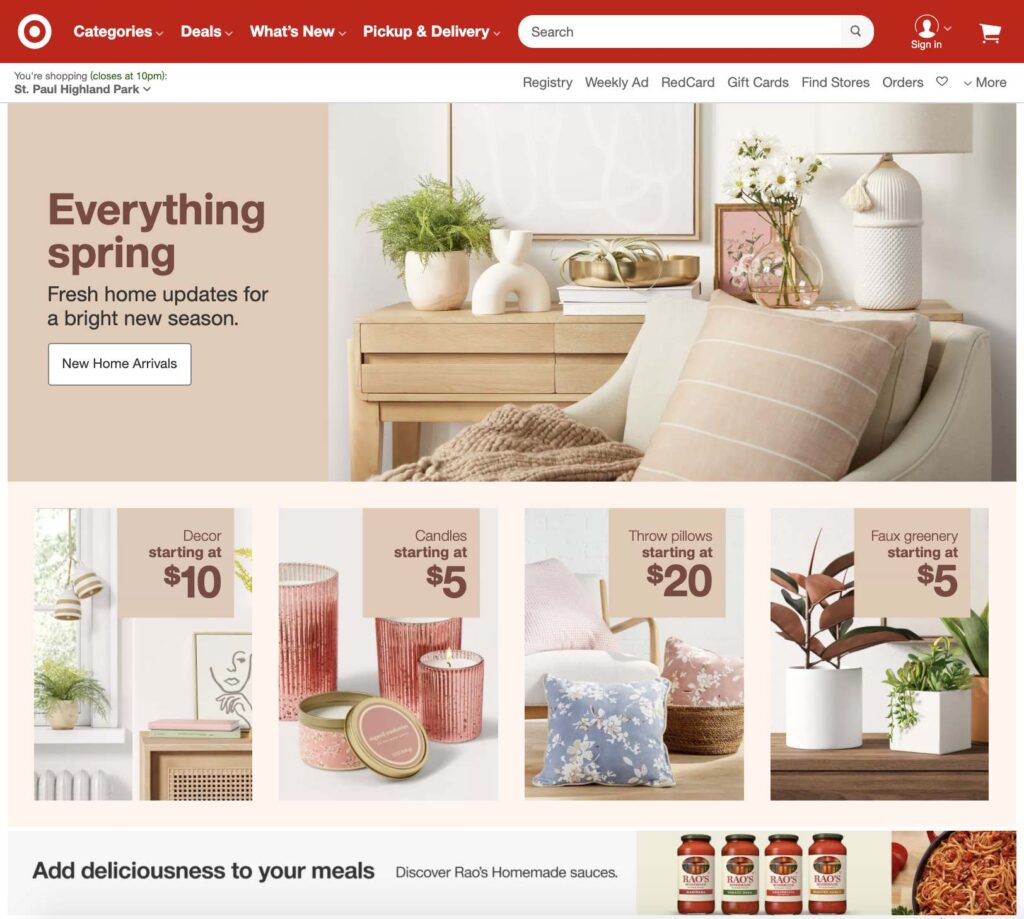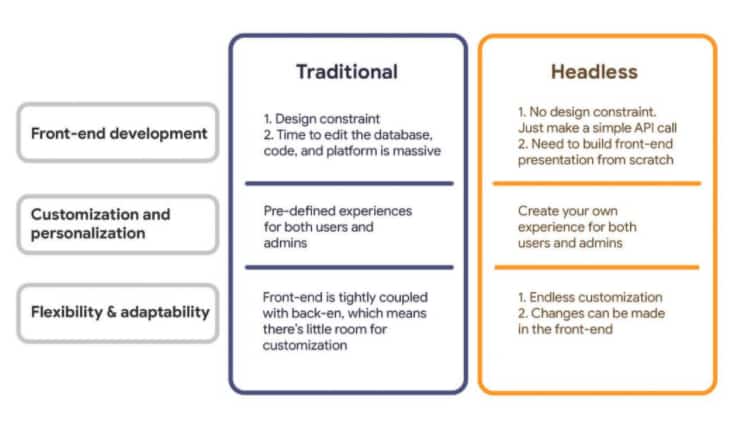Do you feel a little bit of whiplash when you look at how much ecommerce has changed in recent years? (And how it’s seemingly been blasting through hyperspace since the dawn of the pandemic?) Shoppers are changing, habits are evolving, and ecommerce leaders are reshaping trends and tech every week it seems. If all of these changing tides are tossing your planning and tactics into turmoil, don’t worry, you’re not alone.
Ecommerce is a rapidly evolving beast, and this next year is going to prove no different. The continued demand for ecommerce across all verticals isn’t fading, which means trends will continue to crop up and align with changes. It’s time to buckle up and start looking ahead: let’s get an idea of what trends and tools ecommerce brands need to conquer in 2022.
While it’s important for every ecommerce brand to continue to evolve to meet consumers’ changing expectations and needs, not every brand needs to latch onto the latest tech trends every year. Purchasing, learning, training, and implementing a new suite of tools so often could wreak havoc on not only your website but also your employees. As we talk about some of the new tools your company can consider, think about how they will apply to your brand and market specifically.
Who should consider adopting the latest trends in ecommerce? It’s up to you and your team to decide which trends will impact your business and how you will meet changing needs. However, there are a few key brand characteristics that signal you should be looking at expanding current technology stack or adopting new tools to stay relevant and competitive.
Let’s explore which ecommerce shops could reap the biggest benefits from adopting the latest tech and trends heading into 2022.
What Will 2022 Bring to Ecommerce Stores?
The technology to meet and support ever-changing ecommerce needs requires advanced thinking and flexible adoption. Some of the trends in the past that brought technology along with them included A/B testing tools, user-friendly selling platforms, and huge advancements in mobile search, navigation, and purchase options.


The evolution of even the most popular ecommerce websites is astounding. Today’s ecommerce platforms are capable of being tailored to a shopper’s geography, location, trends, and more. The real impressive part, though, lies beyond the website. Today’s target site tracks who clicks where. If a shopper were to click the deal on candles, for example, you can bet they’d get an email all about candles in a short while.
Other more recent trends came because of the pandemic. There’s been a huge focus on online support, fast and simple shipping options, and offering a wide variety of payment options, like Buy Now Pay Later. In each case, it’s up to your team to decide how to balance trends and your bottom line. But, like much in the world of ecommerce, finding the right technology stack will pay dividends in future sales.
So, what are the emerging trends your organization should be focusing on now? What technology will you need to consider moving into 2022? Ready to thrive with the right combo of tools?
We’ve put together a list of the top four trends that will define ecommerce in 2022. Whether you’ve already adopted these trends or need some guidance on how to get there, we’ll share some key insight that will help you master the technology you’ll need to stay competitive in 2022 and beyond.
Trend #1: Headless ecommerce drives enhanced experience for customers and employees
Headless ecommerce is where a retailer separates the back end of the ecommerce site from the front end. This allows ecommerce platforms to manage the design of the front end of the website while using APIs to call and deliver the inventory and display it on the website. Now designers can design, without having to worry about updating inventory or pages. And content is refreshed much more quickly.
So what does this look like for your customers and employees? Why is this going to be a hot trend?
- Better for employees. Your team will have tools they’re comfortable with to deliver the best UI possible to your customers. Headless ecommerce gives everyone the right tools they need to do their job without the risk of impacting what other roles or departments are working on.
- Streamlined updates. Whether you are planning to launch a new ad campaign, publicize a new collaboration, or advertise a new product through your website, you need to be able to have a way to update and roll out changes to the site quickly. By decoupling the front end of your ecommerce site from the backend, you can quickly make changes without worrying about breaking something on the back end.
- Save time for IT. When the design team owns the front end, it reduces the number of requests for tasks from the IT department to fix mistakes, make changes, or add new content. IT won’t turn into a bottleneck for the rest of your business.
The tech you need for this trend:
Jump ahead if you’ve already mastered the art of headless ecommerce. But if you haven’t yet, we have a few suggestions to help you get started on finding the right technology tools to help you make this transition. This is just a start for your research, keep looking for additional tools that will best help your brand.
- Magento: Owned by Adobe, so you know design will work great.
- BigCommerce: A big platform, with a well-established WordPress plugin.
- Shopify: A huge platform with a lot of users to get feedback from.
Trend #2: AI is ecommerce table stakes
Ahh, yes. Artificial intelligence. While some may steer clear from AI for fear of infringing on privacy or giving too much power to the robots and their impending takeover, it’s actually a very accessible (and controllable) tool for ecommerce. When talking about AI in ecommerce right now, there are a few key trends to consider.
Machine Learning (ML)
Your customers produce tons of data. From searches and website visits, to browsing times and email opens, you have a lot of information to sort through to understand your buyers. Using ML algorithms, online retailers can analyze that data and then help deliver a customized shopping experience for their customers. When you have the right tools to gather, analyze, and crunch all those clicks, you’ll be able to better personalize recommendations and customer experiences.
Augmented Reality (AR)
Brands can create immersive experiences allowing a shopper to enter a showroom from the comfort of their own couch. One Google study found that “more than 90% of Americans currently use, or would consider using, AR for shopping.” It’s not hard to see why it’s appealing and it appears to be working. Research published by Shopify found that merchants who add an immersive 3D experience to their sites “see a 94% conversion lift, on average.”
Image recognition
Pinterest is famous for using this technology. Users can simply tap on an object within an image, or take a screenshot of an object, and use it to search and shop for that object. According to Google, “more than 90% of Americans currently use or would consider using visual search for shopping.”
How does incorporating this type of technology into your ecommerce platform help you? When you’re able to offer more personalized, targeted content to your customers, it could lead to massive differentiation and advantages, even for the smallest brands.
Your consumers are beginning to expect AI. It’s table stakes. If you don’t have it, you need to begin to decide how you’re going to implement it within your business. Here are a few things to consider when you’re taking the first steps to implement AI.
It’s not magic. AI can be hard to understand and sometimes feel like too much to get a grasp of. But it doesn’t need to feel out of reach. Either hire someone with a background in AI who can direct your company to the right tools, or find tools that offer a simple interface for deploying ML or AR within your ecommerce platform. There are also many learning resources at your disposal either through guided onboarding when you join a platform, online courses, or even simple YouTube tutorials from existing users and pros.
Decide where to focus your efforts. Though we listed several ways AI can be integrated into ecommerce, you don’t need to do all of them at once. Decide what your industry is doing by way of AI, then focus your efforts on that. For example, consumers are beginning to expect beauty brands to offer AR shopping experiences, while fashion brands may want to look at integrating image search. Or platforms with massive inventories need to find ways to quickly analyze data about shoppers to offer a more personalized experience through ML algorithms.
Start small to move quickly. If you haven’t already done it, AI can feel intimidating. Start with a small project to gain an understanding of how the technology will work for your brand. Once you grasp that project, start expanding it. Also, feel free to create a small cohort of people to test your AI on, like your coworkers or friends.
The tech you need for this trend:
Even if you already have incorporated AI into your ecommerce platform, there are so many facets and tools, you’ll likely never be done expanding out AI toolset. This is one of those things that will always be evolving and advancing, so your AI work is never finished (hooray!). Here are some resources to consider on your journey.
- Personalization tools
- Visual search tools
- Research from Google on AR in ecommerce (champions Google’s AR tools, of course)
Trend #3: Brands will prioritize the post-purchase experience
Most online stores stuff their money up front—customer acquisition. You have to get consumers in the door or they’ll be shuttered before you know it. The fight to get attention is real, and you’ve invested a lot of time and effort to just get consumers to your website.
Once you have someone’s attention, converting them to purchase is a whole other journey. Everything about your online shop needs to be working flawlessly, since even a hint of friction will send shoppers fleeing. And if your on-site experience isn’t up to snuff, you’re basically giving the competition an eager customer.
By the time a consumer spends money on your products, you’ve already invested a huge amount of time and effort on them. Despite the sheer amount of resources it takes to snag a conversion, though, that’s not all success looks like in ecommerce. The relationship with your customer doesn’t end at purchase, so neither should your effort.
The market is going to see a dramatic shift from acquisition and conversion to post-purchase happiness and satisfaction. This is the part of the customer journey that turns one-time customers into long-time loyalists who spend more, more often. What does this mean for your organization?
Consider the typical buying journey. A consumer decides they want a product. They spend hours researching it, comparing different brands, watching videos, looking at prices, reading reviews. When they make the decision to purchase, while they’re excited about their new product, they already feel like they’ve committed a lot of time, effort, and actual money into this purchase and they want to see their product as soon as they can. An unclear, untrustworthy, or unsupportive post-purchase experience means all that excitement can quickly turn into anxiety and frustration.
Margaret Julian, Director of Product Marketing at Route, said they’ve found users check their package tracking app “on average average times per order.” That’s seven times that shoppers are engaging with their product and your brand after they purchase. If they don’t know when their product is coming or where it is, that interaction can have a huge impact on their views of your brand and the likelihood of returning for more.
When someone has invested in a brand, they want to feel that the brand is equally invested in them. Everyone knows that a mutually beneficial relationship is the only one worth hanging onto, right? (Oh right, this is a blog post, not therapy.)
So, how do you manage this trend?
Proactive communication about shipping. Reduce anxiety about when customers will receive their package with accurate shipping and package status updates. While a lost or delayed package will be frustrating for the consumer, getting ahead of the issue with caring and supportive communication—or even a little perk for their troubles—will dull the blow and leave them with a more positive opinion and experience.
Self-serve options for issue resolution. Let customers have an easy way to solve problems after purchase, whether it’s finding an item that never arrived, returning an item that doesn’t work, or trying to stay in contact with you. If customers are sent to chatbot purgatory every time they have a question, they’re going to be sour. And if your support team has to keep wasting time answering hundreds of “Where is my order?” questions, they’re also going to be sour. Dodge the sourness altogether with empowered resolution.
Multiple touchpoints moving forward. Don’t leave the customer hanging after they complete the checkout. The first step is sending basic “thank you” and confirmation emails or messages, but don’t forget to keep the relationship going after the deal is done. Consider nurturing each customer and reach out with future deals and offers to ensure they stay connected with your brand.
The tech you need for this trend:
Prioritizing the post-purchase experience could still seem foggy since it’s not typically an ecommerce strategy in the limelight. Thankfully, Route for Merchants is one platform that is ready for you to enhance your experience right out of the box. It’s a complete post-purchase suite of tools, so you can start differentiating your brand and providing loyalty-inducing post-purchase experiences as soon as you sign up.
Trend #4: Personalization and Curation is the name of the game
This trend builds on pretty much each of the previous ones: continue to engage with your customers after they purchase. Create a community. The more you engage with your customers, the more data you’ll be able to gather. (Nothing creepy and invasive—just enough deets about what they’re clicking or liking.) The more information you have, the better you can create a more personalized experience with your brand.
Personalization has been on the rise for a few years, but increasing competition, more shoppers than ever, and evolving customer expectations have it finally at the forefront of trends. More personalization means curated offers and products, earning trust, maintaining a closer relationship, and more. When a brand wins the relationship game with a customer, it can count on higher average order values and more frequent orders. Or coveted customer loyalty, in a nutshell.
The hard part of getting a shopper’s attention initially is over. Finding tools that will help you learn what drives satisfaction for your customers, and what will drive engagement, will keep you moving forward.
Here are some ways to stay on-trend regarding personalization in 2022:
- Provide tailored feeds of the newest products or notifications when something new drops that could be of interest to a segment of customers.
- Gather information along the entire customer journey—from first ad click to extended engagement.
- Go beyond your products. Share your story, causes, and passions with your customers. Help them feel connected in multiple ways with your brand.
- Join a brand network. There are many companies out there that help users connect with and follow their favorite brands. Find a network that fits with your customers and join a community. Discover new customers and help them discover your best products.
The tech you need for this trend:
The tech needed for this trend can come in several forms. Platforms like Route and Shop will gather insights about what your customers are purchasing, where packages are being tracked, and other trends surrounding post-purchase engagement and behaviors. Marketing automation platforms, on the hand, can gain more insights about your other marketing materials—like emails and ads clicked, pages visited, and beyond—so you can round out your understanding of how a customer converted and what they’re interested in. With a comprehensive understanding of your customers throughout their journey, you’ll be able to fine-tune your offers, engagement, and more with each shopper.
- Route Discover
- Shopify Shop
- A marketing automation platform like Klaviyo or Mailchimp
Tackle 2022 with the right tech stack for ecommerce trends
If there’s one thing we’re used to in ecommerce, it’s that change is the baseline. But having the right technology tools and partners in place means change doesn’t have to be a headache. By understanding the trends that will impact the next several years, you’ll be able to plan ahead, get the right tools in place, and ensure you are ready to maintain your competitive edge in your market.
So whether you have some or all of these tools in place, or if you need to begin researching tools to best meet the upcoming trends, make sure you’re ready to succeed in the future.
Route is a great choice for a technology partner as you prepare for the future of ecommerce. With our innovative options for package tracking, buyer protection, and customer engagement, Route can help you crush the post-purchase experience and drive growth for your brand
